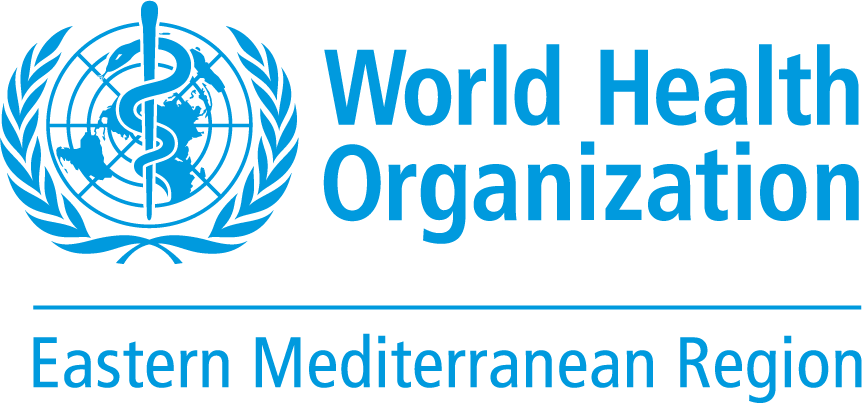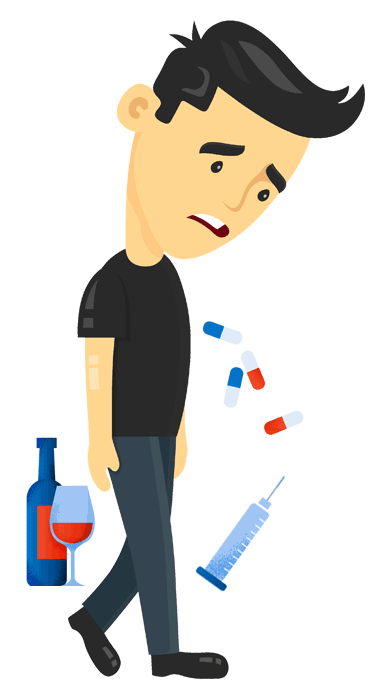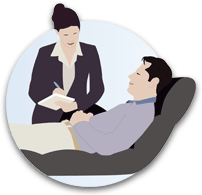Substance use
Substance use can cause different health, social, legal and financial problems, like:

Health

Legal
Fines for drink-driving, arrest for drug possession, violent behaviour possibly leading to arrest.
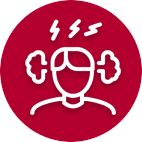
Social
Arguing and fighting with your family or partner, lack of motivation to meet responsibilities or being late for work because of symptoms experienced after substance use such as headaches.
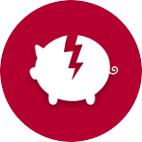
Financial
Financial problems may occur as a result of money spent on substances.
What can you do?

Think about any problems that you may have experienced as a result of substance use over the last 12 months and write a list, as below.
| Substance | Problem (s) |
|---|---|
| 1. |
|
| 2. | |
| 3. | |
| 4. |
If someone else (family member, health professional, etc.) has said anything about problems resulting from your substance use add them to your list.
In reviewing your list of problems, how concerned are you about your substance use? Mark yourself.
| 1 | 2 | 3 | 4 | 5 | 6 | 7 | 8 | 9 | 10 |
|---|---|---|---|---|---|---|---|---|---|
| Not at all concerned | Extremely concerned |
||||||||
Decision time
Weigh up the effects of your substance use behaviour using a balance sheet as below.
Record long-term and short-term positive and negative effects.

| Effects | Continuing my present substance use pattern | Reducing or stopping my substance use |
|---|---|---|

|
||

|
Set a goal for yourself
I will cut down my substance use
I will stop my substance use.
How can you achieve your goal?
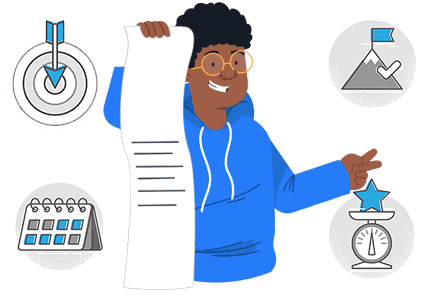
Make a contract with yourself
Make a contract with yourself by setting realistic targets.
- Be specific.
- Make sure you can measure your targets.
- Make sure they are achievable.
- Set yourself a time frame.
Example
| If you intend to stop completely |
|---|
|
I will stop using (substance) on . . . /. . ./. . . |
| If you intend to cut down |
|
I will cut down my (substance) use to no more than once per fortnight starting from ... /... /... |
|
I will do this for three months until ... /... /... and then I will review my progress. |
Maintain a weekly diary
A diary helps you track your progress. It shows you what is happening, when and where change is occurring and makes it easier for you to spot high-risk situations that make you want to use.

| When? Where? With whom? | Substance(s) used and how much? | Money spent | Wanted to use but didn’t* |
|---|---|---|---|
*If you are cutting down, fill in this column if you felt that you wanted to use more than your limit but didn’t.
If you are stopping, make a note if you wanted to use but didn’t.
In either case, write down what you did instead.
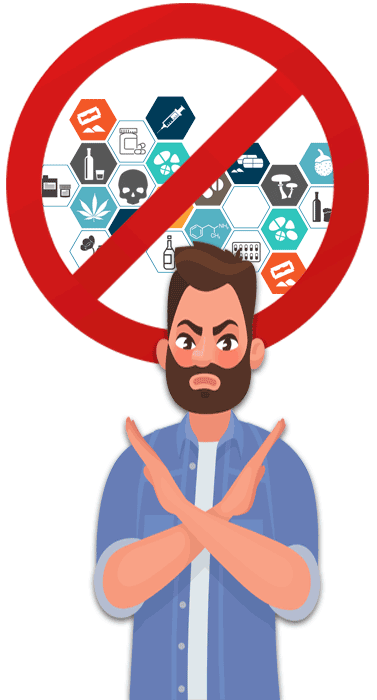
If your goal is to stop substance use completely
- Don’t postpone. Decide on a target date to stop using the drug. Stop on that date.
- Declare publicly your intention to stop. This will make others aware of your intention and they can help and encourage you to reach your goal.
- Stay away as much as possible from “triggers” (high-risk situations) that make you want to use.
- Be patient. Don’t give up when you have a bad day but be kind to yourself. Tell yourself that change doesn’t happen overnight and “I’ll do it differently next time”. Please refer to problem management approach.
- Keep going over your balance sheet and the reasons for wanting to stop or cut down.
- Regularly check your substance use diary. See how much you are using now compared with before.
- Reward yourself with something you enjoy. This could be shopping, going for a walk in your favourite spot, having a bath, listening to music, going out with friends, having a nice meal.
- You may face withdrawal effects after stopping. Seek support from your health care provider if the effects from withdrawal are serious.
If your goal is to cut down
- Never buy more than the amount you plan to use in one session.
- Avoid keeping a stash that might encourage you to use more.
- Start using later than usual and finishing earlier and keep this tendency going.
- Declare regular non-use days – try for at least 2 days a week.
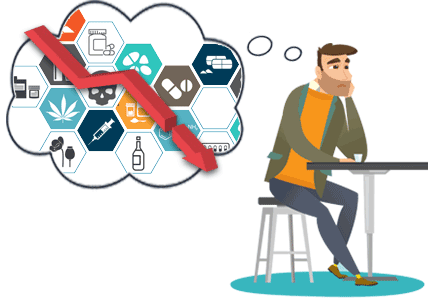
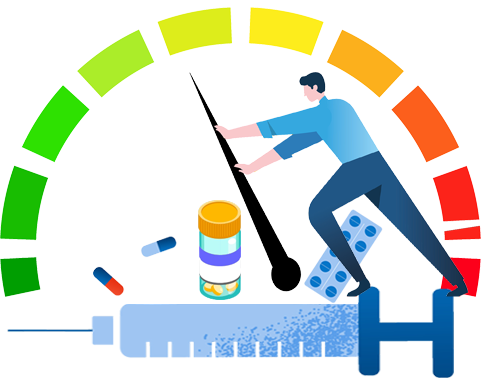
Reduce the risk
- Consider less harmful ways of using a substance. For example, if you are injecting can you take the drug in a less harmful way?
- Don’t drive or operate machinery while using drugs.
- Try not to use daily.
- Try not to use multiple substances on any given day.
- Don’t use drugs while you are pregnant or breastfeeding as it can have harmful effects on your unborn child/baby.
Think about talking to a mental health professional from the list in Section 6. While you may feel that this is a difficult step for you to take, we urge you to do so, mental health professionals really can help and it can help to talk to someone.
Keep up the hard work
Identify and avoid “triggers”
Look at your diary. It can remind you of those situations which make you want to use.
| List your triggers |
|---|
|
1. |
|
2. |
|
3. |
|
4. |
Triggers may be tied to:
- particular places where it is easily available (e.g. a friend’s place, a club).
- certain people (e.g. partner, particular friends).
- particular times (e.g. after dinner, weekends, celebrations).
- certain emotions (feeling depressed, angry, guilty, stressed or worried).
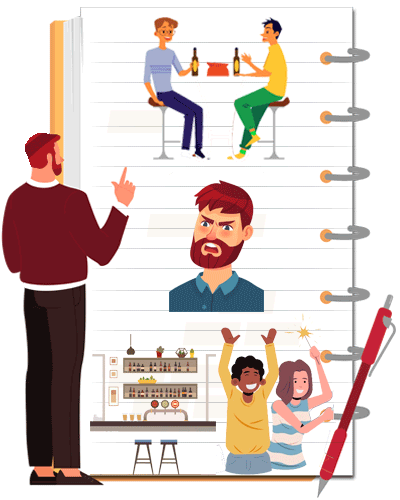

If you are experiencing pressure from friends to resume drug use after you have stopped or to take more than you intend, don’t give in to this pressure, you have worked hard to get where you are and you probably feel much better. Think about what you have achieved and the positive improvements it has made in your life.
Don’t doubt yourself, you are strong!
If it is a problem for your friends, and you feel uncomfortable about being asked, you might have to avoid these people and situations for a while.
Think in advance about how you are going to deal with high-risk situations.
Cope with craving
Identify the triggers for your craving.
| Place and time | Thoughts | Physical feelings | Behaviours |
|---|---|---|---|
|
|
|
|
|
|
|
|
|
|
If you are experiencing a craving or strong urge to use, try the following techniques.

Delay
Tell yourself “I will just wait for 30 minutes before I use”. The craving may lessen or pass.

Distract
Do not sit in one place thinking about drugs if you are experiencing cravings. Do something to distract yourself. Maybe go for a walk or do an activity which you enjoy.

Decide
Make a list of positives and negatives about your drug use to remind yourself of why you have chosen to stop or cut down.
Positive self-talk

Talk to yourself out loud about how destructive these cravings are and tell yourself that they will pass with time. Talk yourself through the negative consequences of resuming or increasing drug use.
Relax

Relaxation exercises can help. Try some at the Mental health and psychosocial support platform.
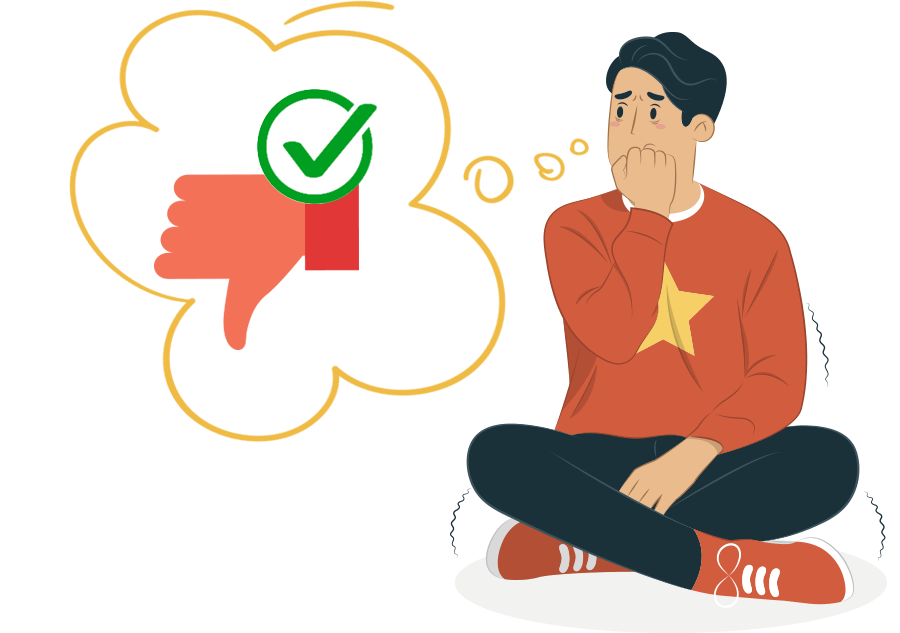
Returning to substance use after you have stopped for a while is common.
It’s not the end of the world if you stray from your targets. The trick is not to let any extra substance use continue.
Get back to those targets. Look at what happened. Was this a high-risk situation that should be on your list? If so, perhaps you need to think of new ways to cope. Refer to Your own strengths and coping mechanisms on the Mental health and psychosocial platform.
If your substance use is getting out of control, get help. Speak to your primary health care worker, a trusted friend or a specialist.
Substance use related health risks
Alcohol consumption is a risk factor for a wide range of health problems, and harmful use of alcohol is a major cause of premature illness, disability and death.
If you drink alcohol, you are at risk of a range of health and other problems, especially if:
- you drink more than 2 standard drinks* a day;
- you do not have at least 2 days of the week when you do not drink.
There is no risk-free level of alcohol consumption, and for many people consumption of 2 standard drinks a day can still be associated with significant risks.
There are certain factors which may increase the risk of health problems associated with alcohol use, such as :
- a family history of alcohol dependence;
- being on certain medications or having certain medical conditions;
- weighing less than other people of your gender or height;
- drinking on an empty stomach.
Tolerance and dependence may develop after chronic excessive use of alcohol and dependent drinkers may suffer withdrawal symptoms if they reduce or stop their alcohol consumption.
Severe alcohol withdrawal complicated by delirium tremens is a medical emergency. Withdrawal symptoms include tremor, sweating, anxiety, nausea, vomiting and diarrhoea, insomnia, headache, hypertension, hallucinations and convulsions.
You should not drink at all if:
- you are pregnant or breastfeeding;
- driving, operating machinery or undertaking other activities that involve risk;
- you have health problems which may be made worse by alcohol;
- you are taking medicine which directly interacts with alcohol;
- you cannot control your drinking.
The risks associated with use of alcohol at unsafe levels (ranging from less severe to more severe) include:
- Hangovers, aggressive and violent behaviour, accidents and injury, nausea and vomiting
- Reduced sexual performance, premature ageing
- Digestive problems, ulcers, inflammation of the pancreas, high blood pressure
- Anxiety and depression, relationship difficulties, financial and work problems
- Difficulty remembering things and solving problems
- Permanent brain injury leading to memory loss, cognitive deficits and disorientation
- Stroke, muscle and nerve damage
- Liver and pancreatic disease
- Cancers of the mouth, throat and breast
- Suicide
*A standard drink is:
1 can of ordinary beer (330 ml at 4%);
a single shot of spirits (30 ml at 40%);
a glass of wine or small glass of sherry (100 ml at 12% or 70 ml at 18%);
a small glass of liqueur or aperitif (50 ml at 25%).
Cannabis is the most widely consumed illicit drug globally.
It is possible to experience cannabis overdose and toxicity, but the likelihood of death due to cannabis intoxication alone is very low, although combination with other drugs can result in overdose and death.
The negative health consequences of cannabis use in pregnancy is similar to the effects of tobacco smoking on mother and baby.
The risks associated with use of cannabis (ranging from less severe to more severe) include:
- Problems with attention and motivation
- Anxiety, paranoia, panic, depression
- Decreased memory and problem-solving ability
- High blood pressure
- Asthma, bronchitis
- Psychotic symptoms and psychosis, particularly in those with a personal or family history of schizophrenia
- Heart disease and chronic obstructive pulmonary disease
- Cancers of the upper airway and throat
Cocaine is a stimulant drug and its use is associated with a wide range of physical and mental health problems.
There is a significant risk of toxic complications and sudden death, usually due to cocaine’s effect on the cardiovascular system.
Cocaine use is associated with risky behaviour, including high-risk injecting and unsafe sex, putting users and their partners at significant risk of contracting a range of sexually transmitted diseases and bloodborne viruses.
Cocaine has a rapid onset and its effects can wear off relatively quickly, which can result in a tendency towards multiple use of the substance within a single session.
Cocaine produces strong psychological dependence or craving, which can result from using the drug even just a few times.
The risks associated with use of cocaine (ranging from less severe to more severe) include:
- Difficulty sleeping, heart racing, headaches and weight loss
- Numbness, tingling, clammy skin and skin scratching or picking
- Intense craving and stress from the lifestyle
- Accidents and injury and financial problems
- Mood swings – anxiety, depression and mania
- Paranoia, irrational thoughts and difficulty remembering things
- Aggressive and violent behaviour
- Psychosis after repeated use of high doses
- Sudden death from cardiac arrest
Amphetamine-type stimulants include amphetamine, dexamphetamine, methamphetamine and ecstasy (MDMA).
They have stimulant effects on brain functions (central nervous system) and their use is associated with a wide range of physical and mental health problems.
There is growing evidence that some amphetamine-type stimulants damage brain cells.
Long-term high dose amphetamine use is a risk factor for malnutrition, which may also cause permanent damage to brain cells.
Mood swings also are associated with regular use of amphetamine-type stimulants and some users report a worsening of mental health problems, such as depression and irritability, over time.
The risks associated with use of amphetamine-type stimulants (ranging from less severe to more severe) include:
- Difficulty sleeping, loss of appetite and weight loss, dehydration, reduced resistance to infection
- Jaw clenching, headaches, muscle pain
- Mood swings – anxiety, depression, agitation, mania and panic
- Tremors, irregular heartbeat, shortness of breath
- Difficulty concentrating and remembering things
- Paranoia, aggressive and violent behaviour
- Psychosis after repeated use of high doses
- Permanent damage to brain cells
- Liver damage, brain haemorrhage, sudden death from cardiovascular stress
Inhalants cover all substances that can be inhaled or breathed in, despite the fact that the substances themselves may have a range of different pharmacological actions. The most commonly used volatile substances include petrol, solvents, glues, sprays, lacquers containing benzene and glues or paint thinners containing toluene. Amyl nitrite and nitrous oxide are also used in some communities. The most common way they are used is to sniff them from a container although some may breathe them through a plastic bag.
Inhalants tend not to have a high dependence liability which means that users are unlikely to become physically dependent on them. However, inhalant use is associated with a range of severe acute and chronic effects.
The risks associated with use of inhalants (ranging from less severe to more severe) include:
- Flu-like symptoms, sinusitis, nose bleeds
- Nausea and vomiting, indigestion, stomach ulcers, diarrhea
- Dizziness and hallucinations, nausea, drowsiness, disorientation, blurred vision
- Headaches, accidents and injury, unpredictable and dangerous behaviour
- Coordination difficulties, slowed reactions, poor oxygen supply to the body
- Memory loss, confusion, depression, aggression, extreme tiredness
- Delirium, seizures, coma, organ damage (heart, lungs, liver, kidneys)
- Death from heart failure
Sedatives and sleeping pills include benzodiazepines and related compounds but not antidepressants or antipsychotics.
They are prescribed medicines, however, can cause problems for users, particularly when used more frequently or at higher doses than prescribed.
Generally, benzodiazepines are prescribed to help manage sleep difficulties, anxiety or other mood disorders, trauma, surgical procedures, withdrawal from specific substances, seizures and muscle pain.
Sedatives and sleeping pills include diazepam, temazepam, alprazolam, clonazepam, flunitrazepam, zolpidem, midazolam and phenobarbitone. This is not an exhaustive list and only includes pharmacological names.
Tolerance and dependence on sedatives or sleeping pills can develop after a short period of use, and withdrawal from these drugs can be extremely unpleasant. Withdrawal symptoms include severe anxiety and panic, insomnia, depression, headache, sweating and fever, nausea and vomiting and convulsions.
Benzodiazepines are extremely unlikely to cause death from overdose, even when taken at very large doses. However, when combined with other substances such as alcohol, paracetamol or opioids, the risk of overdose and death is markedly increased.
The risks associated with use of sedatives and sleeping pills (ranging from less severe to more severe) include:
- Drowsiness, dizziness and confusion
- Difficulty concentrating and remembering things
- Nausea, headaches, unsteady gait
- Sleeping problems
- Anxiety and depression
- Tolerance and dependence after a short period of use
- Severe withdrawal symptoms
- Overdose and death if used with alcohol, opioids or other depressant drugs
Hallucinogens include lysergic acid diethylamide (LSD), psilocybin and psilocin (psychoactive fungi), ketamine, phencyclidine (PCP) and mescaline.
They are a group of drugs that affect the user’s perceptions of reality by distortion of one or several of the five senses (vision, hearing, smell, taste, touch) resulting in hallucinations.
They can also result in distortions of cognitive processes, sense of time, self-awareness and mood.
Effects of hallucinogens are unpredictable and may be different for different users or on different occasions.
In the long term, use of hallucinogens may worsen the symptoms of mental illnesses such as schizophrenia.
Users may also experience flashbacks which are spontaneous recurrences of the effects of hallucinogens use in the past.
Hallucinogens tend not to have a high dependence liability which means that users are unlikely to become physically dependent on them, and they tend to be used experimentally and occasionally rather than repeatedly.
The risks associated with use of hallucinogens (ranging from less severe to more severe) include:
- Visual, auditory, tactile and olfactory changes, unpredictable behaviour
- Difficulty sleeping
- Nausea and vomiting
- Increased heart rate and blood pressure
- Mood swings
- Anxiety, panic, paranoia
- Flashbacks
- Worsen the symptoms of mental illnesses such as schizophrenia
Opioids are central nervous system depressants. There are street (non-prescribed) opioids, such as heroin and opium, however opioids also can be a prescribed medicine and generally are used to manage pain.
Use of street or non-prescribed opioids can cause many problems for users, particularly as they are generally injected or smoked which can create a further layer of problems for the user.
Prescribed opioid use also can cause problems for users, particularly when used more frequently or at higher doses than prescribed. Prescribed opioids include morphine, codeine, methadone, buprenorphine, pethidine (meperidine), dextropropoxyphene and oxycodone, tramadol, fentanyl.
Opioids can be injected, as is often the case with heroin, smoked (heroin and opium), taken orally, intramuscularly, intravenously, sub-lingually or as an anal suppository (pharmaceutical opioids).
Injection of heroin results in immediate uptake of the drug and rapid onset of effects, which can result in an overdose (either fatal or non-fatal), particularly if combined with other drugs such as alcohol or benzodiazepines.
The risks associated with use of opioids (ranging from less severe to more severe) include:
- Itching, nausea and vomiting
- Drowsiness, constipation, tooth decay, irregular menstrual periods
- Difficulty concentrating and remembering things
- Depression, reduced libido, impotence
- Financial difficulties and contact with the law
- Relationship stress
- Problems maintaining work and family life
- Tolerance and dependence, withdrawal symptoms
- Overdose and death from respiratory failure
‘Other’ drugs are those that do not readily belong in any of the other drug categories pharmacologically or otherwise. This could include gamma hydroxybutyrate (GHB) and any other ‘designer’ drugs. Other drugs such as Kava, Datura, Khat, nutmeg and excess caffeine use also may be placed in this category. There may be other substances used in your country which don not fit into any of the other substance classes given and need to be put into this ‘other drugs’ category.
